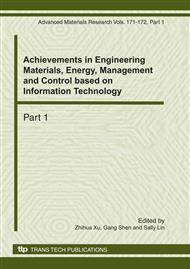p.536
p.543
p.547
p.551
p.555
p.561
p.565
p.570
p.575
New Immune Algorithm and Application in Power Filter Optimization Design
Abstract:
In this paper, for multi-objective, with strategy of antibody concentration with sufficiency vector distance, a novel immune selection operator was given, and a scale variable hybrid mutation operator, which introduced the variable scale method in the hybrid mutation, was given also. The algorithm was applied in the optimization design of filter. To apply the algorithm, passive power filter structure was introduced first, and then optimization objective and constraints of filter was given as follows. With the optimization objective and constraints, for an experiment circuit, calculate using the algorithm and experiment was carried on. At last, Comparison of the algorithm with genetic algorithm and nonlinear programming was given, it shows that the algorithm has better performance of self-regulation, and could quickly converge to the global optimum. These results prove that the algorithm is effective and practicable using in multi-objective optimization design.
Info:
Periodical:
Pages:
555-560
Citation:
Online since:
December 2010
Authors:
Price:
Сopyright:
© 2011 Trans Tech Publications Ltd. All Rights Reserved
Share:
Citation:


